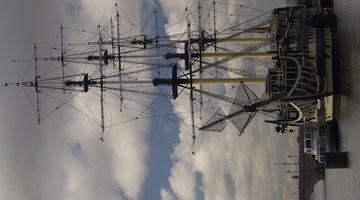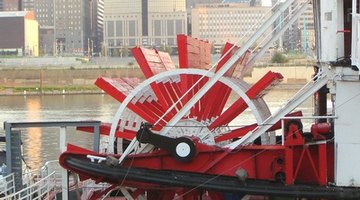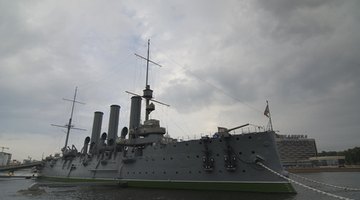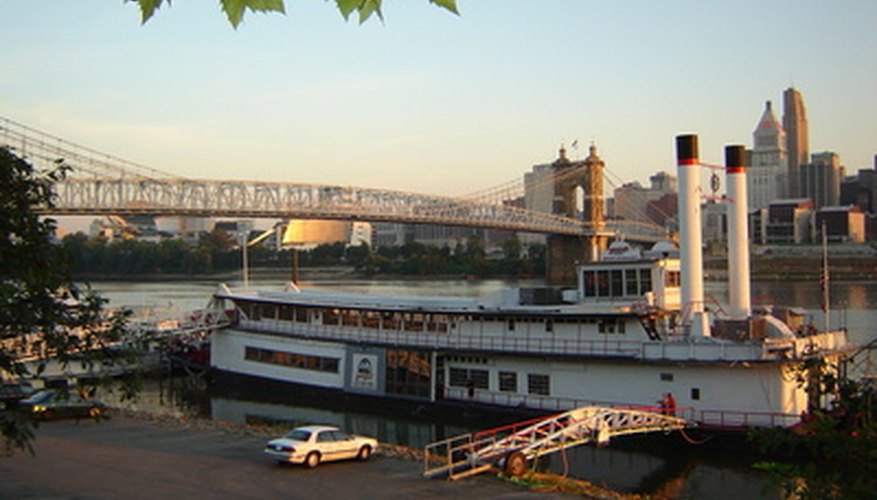Traditional river boats and sea boats were very much alike for a time. It was the success of the river boat and its steam-powered engine that led the way for modern sea ships.
Sailing Ships

For a long time, maritime vessels were built with networks of spars, ropes and sails to carry cargo. Winds carried them toward their destination, while meticulous calculations navigated their journeys. Toward the end of the 19th century, steam engines virtually conquered sea ships. By World War II, sailing ships were commercially extinct.
- For a long time, maritime vessels were built with networks of spars, ropes and sails to carry cargo.
- By World War II, sailing ships were commercially extinct.
River Boats

River waters, in contrast to the oceans and seas, are relatively safe. Not many sails were placed on river boats because inland winds are broken by land features, which weren't good for sail-use, but tolerable for paddling with oars. This is why during the rise of the steam engine, river boats utilised the paddle wheel for executing propulsion.
Transition

For a while into the 1830s, riverboats and some sea ships were very much alike-- powered by steam engines and paddle wheels. But because of giant waves, using paddle wheels became inefficient for seafaring.The year 1836 ushered in the screw propulsion-design (propellers) for use to thrust sea ships. Once again, the two boat types became distinguishable.
